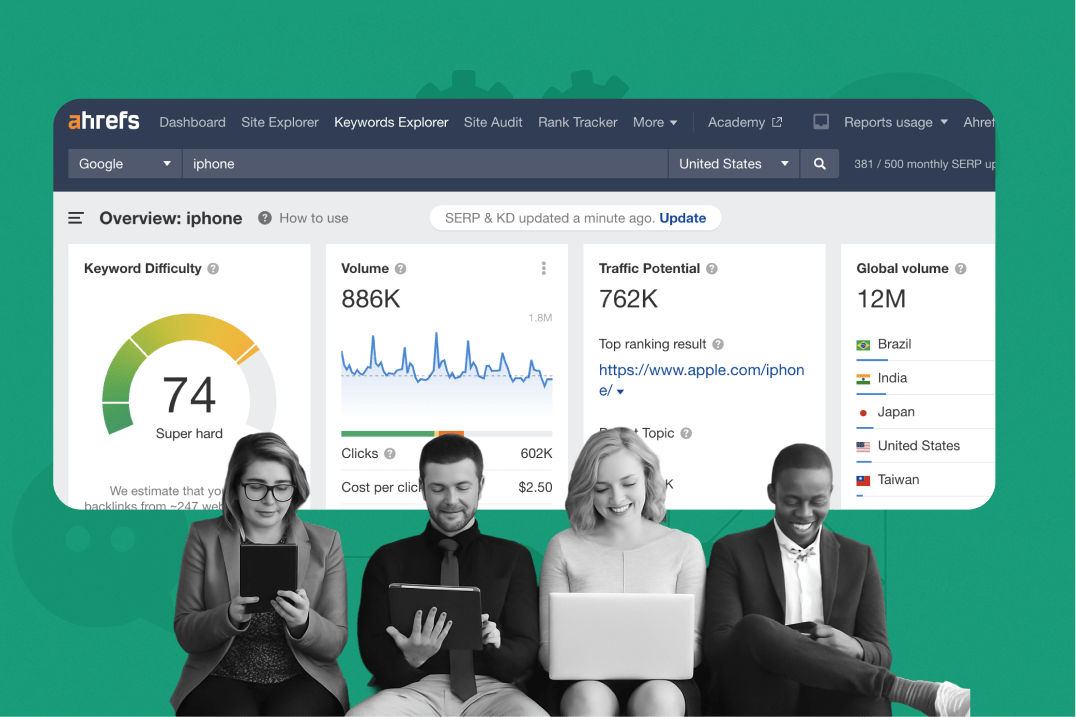
How to Share Ahrefs Accounts in 2025 | Complete Guide
Managing SEO tools efficiently is crucial for freelancers, agencies, and teams working with multiple clients. Ahrefs, a leading SEO platform, is indispensable but comes with strict user policies and pricing structures that can complicate account sharing.
This guide covers everything you need to know about ahrefs shared account usage, ahrefs account share methods, security best practices, team access management, cost considerations, limitations, and advanced tips to optimize your workflow without risking account bans.
Ahrefs account sharing: Why and when?
Sharing an Ahrefs account is often necessary for:
1. Freelancers and agencies managing multiple clients
Clients prefer to use their own Ahrefs accounts but share credentials with freelancers or agencies. Managing multiple accounts on one device can trigger security flags.
2. Solo freelancers collaborating
Temporary access for partners, virtual assistants, or colleagues to perform keyword research or audits without purchasing additional subscriptions.
3. Cost efficiency
Ahrefs charges extra fees for additional users, which can be prohibitive for small teams or startups.
In all these cases, the goal is to collaborate effectively while minimizing costs and avoiding the pitfalls of password sharing or account lockouts.
Ahrefs pricing and user access rules in 2025
Ahrefs offers four main plans with varying user allowances:
| Plan | Price (Monthly) | Included Users | Additional User Cost |
| Lite | $129 | 1 | $40 per user |
| Standard | $249 | 1 | $60 per user |
| Advanced | $449 | 1 | $80 per user |
| Enterprise | Starts at $14,990/year | 3 | $100 per user |
Important: Ahrefs strictly prohibits sharing one login among multiple users. Their Terms and Conditions specify that a single login is for one user only, and suspicious activity from multiple users on one login can lead to suspension or cancellation.
Best methods to share an Ahrefs account
1. Official team feature: Invite users via Ahrefs workspace
Ahrefs allows adding team members officially by upgrading your plan and paying for additional seats. Each user gets a unique login, enabling simultaneous access without security issues.
Pros: Fully compliant with Ahrefs policies, secure, and seamless collaboration.
Cons: Additional cost per user can be expensive for small teams.
2. Multilogin with built-in proxies
Using Multilogin, you can create isolated browser profiles with built-in residential proxies and unique fingerprints. Log into Ahrefs once, then securely share the profile with teammates—no need to reveal credentials.
Advantages: Avoids login verifications, supports multiple users, includes built-in proxy management.
Drawbacks: Requires setup time and a Multilogin subscription.
3. Sharing login credentials (not recommended)
Simply sharing your username and password is the most straightforward but risky method.
Risks: Frequent verification prompts, only one active session at a time, security vulnerabilities, and violation of Ahrefs’ terms.
Outcome: Likely to cause account lockouts and wasted time managing access.
4. Using same IP or VPN Location
Some users attempt to share accounts by accessing Ahrefs from the same IP address or VPN server location to avoid detection.
Limitations: Requires strict coordination, risk of VPN disconnections, and still violates terms.
Effectiveness: Limited and unreliable for long-term use.
5. Remote Desktop or Virtual Machine access
Setting up a remote desktop or cloud VM logged into Ahrefs allows multiple users to access the same session.
Advantages: Only one device session, reducing detection risk.
Drawbacks: Performance lags, management overhead, and potential costs for cloud resources
Security best practices for Ahrefs account sharing
To minimize risk while sharing access, follow these key practices:
- Avoid password sharing: Use tools like Multilogin that enable session sharing without exposing login credentials.
- Maintain consistent IP usage: Ensure all users connect through the same VPN or proxy to avoid triggering suspicious login behavior.
- Restrict permissions: Grant only the necessary level of access when sharing profiles or workspaces to prevent unintended changes.
- Monitor account activity: Regularly check for unusual logins, location mismatches, or other alerts to catch issues early.
- Enable two-factor authentication (2FA): Add an extra layer of security to protect your account in case credentials are ever compromised.
Tips for seamless Ahrefs account Share
For long-term, stable access to a shared Ahrefs account, it’s not just about using the right tools—it’s about using them the right way:
- Tweak browser fingerprints: Anti-detect browsers like Multilogin let you fine-tune each profile’s OS, device, and screen resolution to mimic a consistent user environment.
- Stick to the same proxy location: Always use the same proxy (or at least the same location) the original user logged in from. Changing IPs or geolocation too often is a common reason for forced re-verification.
- Use a password manager (if needed): For teams that must share credentials, pair your setup with a secure password manager to control access.
Dialing in these settings gives you a low-friction, high-stability workflow—without drawing attention or triggering security flags.
Conclusion
Sharing an Ahrefs account is manageable if done right. Tools like Multilogin let teams access the same session securely using isolated browser profiles and built-in proxies—no need to share passwords or trigger login alerts. Stick to consistent IPs, avoid simultaneous use, and you’ll keep your workflow smooth without risking account bans.